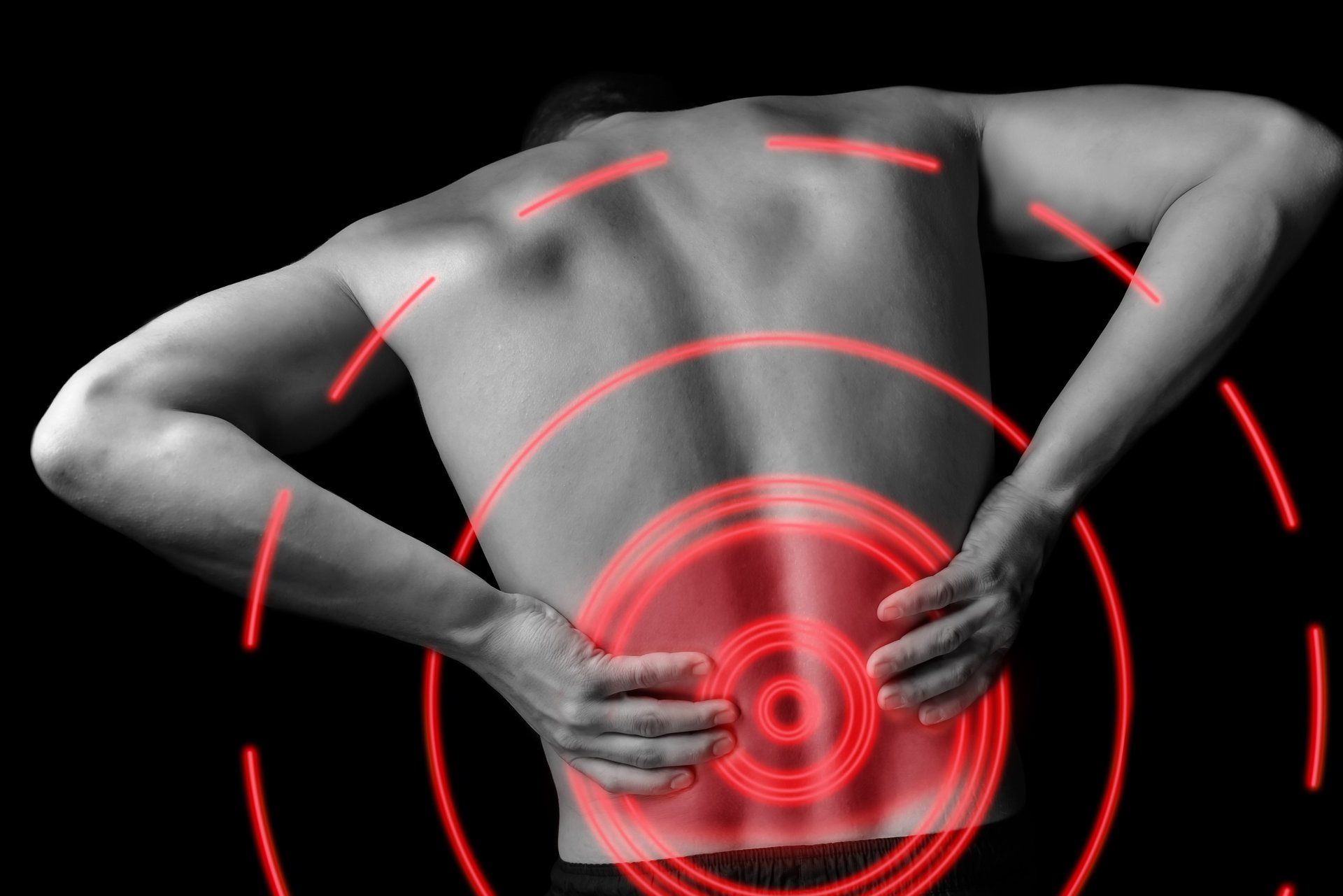Zening Blog
Zening Wholistic Blog
You, Will, Learn More!
Wellness & Health - Knowledge & Information - You Will Learn More

By S. Joseph
•
22 Aug, 2023
Many Clinical trials suggest that massage therapy may help relieve the symptoms of depression. It may also be a helpful addition to your overall treatment plan.
Studies suggest that touch releases hormones in your body that create a sense of emotional connection. Massage may help calm your mind and improve your mood, as well as ease physical aches and pains.

By LifeExtension Foundation
•
16 Aug, 2023
Just when we thought that eating a healthy diet was easy, we are being told that many if not all of the great fresh vegetables and fruits we are learning to like contain substances called Antinutrients. What a bummer! Read on though because the cliche knowledge is power applies here. Everyone knows that eating healthy foods is the cornerstone of whole-body health. Foods like spinach, tomatoes, whole grains, and legumes are packed with the essential nutrients our bodies need to thrive. Moreover, a large body of research suggests that plant-based diets are associated with a lower risk of chronic diseases. I refer to it as the basis of an anti-inflamatory diet. But sometimes piling your plate with more plant foods can impact digestion, resulting in uncomfortable bloating, gas or more serious symptoms, which can make anyone question how “healthy” these foods really are. It’s frustrating when a meal that seems to be the very embodiment of optimal human nutrition can make you wish you’d worn looser-fitting pants! Indeed, that hefty quinoa salad with tomatoes, black beans , seeds, nuts and mixed greens can be a real gut-buster—because these high-in-protein, high-fiber foods also have antinutrients , which are plant compounds that in some cases may interfere with digestion and nutrient absorption. Continue reading https://www.lifeextension.com/wellness/lifestyle/antinutrients

By Aquarius
•
10 Aug, 2022
Pre Menstrual Syndrome (PMS), (it should be called Premenstrual Distress Syndrome), is probably one of the most discomforting and frustrating dis-ease condition, that affects millions of women and girls, between age 18 and menopause. “PMS has been the subject of much discussion and controversy since its description 60 years ago… the discussion has ranged from whether it really exists as a disease entity, whether it is treatable… The controversy has ranged from a consideration of whether it is primarily a physical disorder to whether it is a mental disorder.”1 This is reminiscent of the debate on Fibromyalgia, another female oriented health condition. Is she really in pain or is it her fanciful imagination? Just about every massage therapist’s business card/promo, in print and on the Internet, proclaim that massage therapy can, naturally, alleviate the pain and distress of PMS and spare women the sometimes-debilitating symptoms of this unwelcome, Monthly visitor. I became curious about the subject and thought that it will be good to find out what, if anything, the literature says about Massage therapy and its effects on PMS symptoms. The following is a summary of some published and anecdotal information that I have seen. Definition The US Department of Health and Human Services defines PMS on its Website: Premenstrual syndrome (PMS) is a group of symptoms linked to the menstrual cycle. PMS symptoms occur in the week or two weeks before your period (menstruation or monthly bleeding). The symptoms usually go away after your period starts. PMS can affect menstruating women of any age. It is also different for each woman. PMS may be just a monthly bother or it may be so severe that it makes it hard to even get through the day. Monthly periods stop during menopause, bringing an end to PMS.2 A survey of the literature yielded very similar definitions. However, this one found on Wikippedia.org, is more or less representative of how most health professionals define this condition: “Premenstrual syndrome (PMS) (sometimes referred to as PMT or Premenstrual Tension) is a collection of physical, psychological, and emotional symptoms related to a woman's menstrual cycle. While most women of child-bearing age (about 80 percent) have some Premenstrual symptoms,”3 “…some women with PMS have symptoms of sufficient severity to interfere with some aspects of life such symptoms are usually predictable and occur regularly during the two weeks prior to menses. The symptoms may vanish after the menstrual flow starts, but may continue even after the flow has begun. For some women with PMS, the symptoms are so severe that they are considered disabling. This form of PMS has its own psychiatric designation: Premenstrual Dysphoric Disorder (PDD)”. 4 What causes PMS? Hormonal dysfunction is found to be the cause of many menstrual complaints, the most prominent being premenstrual syndrome. 5 “The causes of PMS are not clear, it is linked to changing hormones during the menstrual cycle. (However) Some women may be affected more than others by changing hormone levels during the menstrual cycle. (Though) Stress and emotional problems do not seem to cause PMS… they may make it worse. Research seems to suggest that lifestyle factors such as Caffeine, alcohol and nicotine intake may make symptoms worse. 6 Diagnosing PMS Although women for the most part seem to be satisfied in casually using the term PMS to define an array of difficulties during "that time of the month” medical professionals are obliged to fit the symptoms into a concise category in order to diagnose, treat and quantify the syndrome in scientific research. There are actually as many as 150 symptoms described in the literature as being connected to PMS, varying with each individual case.7 While some physical and emotional symptoms are more common than others, the specific symptoms identified are not necessarily critical to a diagnosis of PMS. "What is important is the cyclic fashion in which they occur…".8 In order to establish a medical diagnosis of PMS, symptoms are charted for three months to establish a continuing pattern of occurrence during the latter half of the menstrual cycle. Typically, symptoms disappear once menses begins, but in some cases they may continue through the first part of the menses, with only a few days of the month being experienced as normal. In addition to symptoms identified as PMS, pre-existing conditions such as arthritis, asthma and lupus may be exacerbated by these cyclical changes.9 Yet, “…a minority of women never experience PMS, but at the other end of the scale, as many as 40 percent have mild symptoms and up to 10 percent may be affected to the point of debilitation, being diagnosed with the severe form of Premenstrual Dysphoric Disorder.10 A clinical diagnosis of PMS is based on symptoms, when they occur, and how much they affect your life. What are the symptoms of PMS? According to medical and other health care professionals, PMS often includes both physical and emotional symptoms. I think that citing some of the most common symptoms will help women to track their own experiences, to see if they qualify for the ‘clinical’ diagnosis. Women in many parts the world knew that, just prior to their ‘period’, they suffered from distressful phenomena that affected all aspects of their being. Did they really need a ‘Clinical diagnosis’ to endorse and so justify these experiences of pain and general disintegration? It seems like the male dominated medical profession, including Gynecologists, mind you, needed to fit women’s symptoms into some kind of formal model, before they could treat. The model that eventually ‘evolved’ recognize the following symptoms of PMS: * acne * breast swelling and tenderness * feeling tired and exhausted * having trouble sleeping * upset stomach, bloating, constipation, or diarrhea * headache or backache * appetite changes or food cravings * joint or muscle pain * trouble concentrating or remembering * tension, irritability, mood swings, or crying spells * anxiety or depression.11 How do Mds diagnose PMS/PMDD? They check the patient’s symptoms and the way they relate to her menstrual cycle. The patient may also be ask to fill out a symptom chart report for several weeks. There is no test that can diagnose PMS/PMDD. The list below represents, more or less, the conventional medical approach to treatment of this condition: Severe cases Antidepressants. Antidepressants such as SSRIs are commonly used for the depression associated with PMS and PMDD (Freeman EW et al 2004; Baldessarini R 2001). Serotonin reuptake inhibitors that are commonly used to treat PMS include Prozac® (fluoxetine) and Zoloft® (sertraline) (Berga S 2005). Benzodiazepines. This class of medications is used to induce sedative, muscle-relaxant, and anticonvulsant effects (Baldessarini R 2001). Others. Bromocriptine, an ergot alkaloid that blocks the release of prolactin from the pituitary gland, is often given to treat breast tenderness associated with PMS (Meden-Vrtovec et al 1992). Mild to moderate cases. NSAIDs. Over-the-counter (OTC) medicines such as ibuprofen (Motrin®) and naproxen sodium (Aleve®) are commonly used to ease uterine cramping and breast tenderness (Mayo Clinic 2005). These drugs inhibit prostaglandin synthesis (Neal M 2002). It is Premenstrual Dysphoric Disorder (PMDD)” that caught the attention of the Touch Research Institute, (TRI) in Miami Fl., and they decided to focus on that condition for a massage study. The organizers used the official diagnostic definition of PMDD, and conducted a “double blind” study. A brief summary of the report is included below. “To meet the criteria for PMDD as laid out in the Diagnostic and Statistical Manual of Mental Disorders (DSM-IV) the patient is required to have at least five recurring symptoms, of which four are affective (emotional), along with significant interference in social or occupational functions”.12 Women suffering from symptoms of premenstrual syndrome (PMS), such as irritability, headaches, anxiety and weight gain, felt relief from regular massage sessions, according to results from a recent research study. The study, "Premenstrual symptoms are relieved by massage therapy," was conducted by the Touch Research Institute in conjunction with the University of Miami Medical School. Twenty-four women, aged 19 to 45, with premenstrual dysphoric disorder (a severe form of PMS) were selected from gynecological practices. The women were randomly assigned to a massage therapy group or a relaxation group. Those in the massage therapy group received twice-weekly, 30-minute massage sessions for five weeks. The sessions started during a premenstrual week to establish a baseline measure. Sessions began with the woman supine, and included 15 minutes of: kneading the neck; stroking the forehead; pressing down on the tops of the shoulders; stroking on the hands, arms and shoulders; circular stroking on the stomach; stroking of the feet and legs; and kneading of the thighs. The remaining fifteen minutes of the session, the woman was prone while the therapist stretched her ankles; compressed her calf muscles; kneaded her thigh muscles; gave gliding strokes to her legs; and massaged her low back, shoulders and neck. The relaxation group was given progressive muscle relaxation therapy. For 30 minutes twice a week, participants were instructed to tense and relax major muscle groups, starting with the feet and moving up. At the end of the study, results indicated that the massage therapy group experienced a decrease in anxiety, a decrease in depression… a reduction in perceived pain…, and an overall reduction in PMS symptoms including pain and fluid retention… To be Continued...

07 Jan, 2022
Your body is designed to unleash stress hormones like cortisol and epinephrine when it senses danger. But the pressures of everyday life can set off the same reaction. Over time this can make you more likely to get depressed, gain weight, sleep poorly, and have other health problems. Getting away from time to time can give your body a chance to repair some of the damage. Chances are that your mood will be better during vacation than in your day-to-day life. That feeling can last even in the several weeks of planning before you leave. But it's less clear if the post-trip buzz lasts as long. The key to happiness seems to depend on how often, not for how long, you get away. Boost Your Heart How's this for an invitation to chill out? Taking time off may cut your chances of dying from coronary heart disease. The evidence can show up in lab tests, from lowered blood sugar levels to more HDL "good" cholesterol. One study found that the benefits may kick in only if you "staycation" often at home, not if you have to get out of town. Working too hard can send your adrenal system into overdrive. That releases hormones that may weaken your immunity. In turn, you may be more likely to get a cold or flu, and even more serious conditions like irritable bowel syndrome. Vacations let you take your foot off the gas pedal for a bit and allow your immune system to bounce back. Better Sleep The daily grind can zap your ZZZs. Overwork may soak up the hours you need to spend in bed. Or family commitments or stress may keep you from falling asleep or staying asleep. That can leave you tired, groggy, grumpy, and even sick. Getaways are great for naps and snoozes. And if you plan your trip in advance, you'll sleep better both before and after your vacation. Sharper Focus Endless work with too few breaks can fog your brain. You might find it hard to concentrate and to remember things. Time away can recharge you mentally and physically, so you return more focused and energized. The payoff? You may become more productive both on the job and at home. The key to happiness seems to depend on how often, not for how long, you get away. A Zening quality massage is an effective, less costly substitute for a vacation. Don't stress because you can't leave your job or other commitments for a vacation, just get a 60 or 90 minute massage at Zening. You may read the full article if you click this link: https://www.webmd.com/balance/ss/slideshow-vacation-body-effects

By Shaka Belfon
•
20 Apr, 2021
The information in this Blog Post, was originally presented as a final paper in a recent course on the Human Microbiota. This is a truncated version of the paper.I thought that this material will be informative to our readers because one’s microbiome profile may determine the individual’s overall state of health.

By Shaka Belfon
•
26 Mar, 2021
Massage therapy can be of benefit for pain, fatigue, anxiety, stiffness, and many other ailments in addition to being relaxing and feeling good. Theopioid crisis(skyrocketing use of legal and illegal opioid drugs), in combination with increasing complaints ofchronic pain, has caused many people to give more attention to non-drug therapies. The preference for drug treatments over other therapies by medical professionals has been a consequence of FDA drug-centered medicine. Only large drug companies can afford the large, clinical trials that the FDA requires to approve a drug therapy. No one is going to spend hundreds of millions of dollars on clinical trials for unpatentable therapies like massage, yoga, or acupuncture. Reviews of massage clinical trials often conclude that the evidence is weaker than for drug-based clinical trials because large, well-funded trials have not been conducted for massage.Massage therapy clinical trials face another disadvantage because the quality of massage treatment is not uniform. Massage therapists have different strengths, skills, and techniques. And there are different types of massage. Swedish (relaxation, stroking) massage can be better therapy for anxiety, deep tissue (more pressure) massage can be better therapy for pain or fatigue, and Thai (stretching) massage can be better therapy for stiffness, (so can Neuromuscular stretches) Use of opioid drugs for pain has become such a prominent social issue that the problem created by FDA drug-centered medicine can no longer be ignored. This article covers presentations on the scientific value of therapeutic massage given at recent massage conferences.

By Aquarius B
•
01 Mar, 2021
Massage has been practiced in many parts of the world for thousands of years. The earliest evidence of touch therapy was found in ruins of ancient Northern Africa, the shores of the Mediterranean Sea South America, India and China. In all these cultures massage was applied for pain and tension relief, healing and even measure and entertainment. Today, if you need or want a massage, you can choose from several massage therapy styles with a wide variety of pressures, movements, and techniques. Well known terms are deep tissue massage, NeuroMuscular Therapy, and medical massage . In our modern high stress society, Massage Therapy should be an essential part of natural wellness and stress management in New York City and adjacent areas. Like the phrase Massage Near Me, deep tissue massage is a generic term that refers to a Swedish Massage with deep, strong pressure to penetrate muscles and other soft tissues with hands and fingers also, with forearms, elbows, and feet with the intention of relieving tight hypertonic muscle fibers and muscle group as well as systemic body tension and stress. However, contrary to the claims of spas, massage places and even private massage practitioners in Manhattan New York City, none of these styles and techniques is effective for all individuals and for all conditions. Thus, a talented Massage Therapist must be capable of using massage techniques appropriate to the client’s needs and their health condition. According to the American Massage Therapy Association (AMTA), in 2018, approximately 19% of Americans had some form of massage. And, they have a wide range of reasons for doing so, a significant percentage of those surveyed were in Manhattan and adjacent areas. More and more people -- especially baby boomers -- recognize the health benefits of massage. They choose from among many massage styles to get relief from symptoms or to heal injuries, to help with certain health conditions, to enjoy the sensuous pleasure of a good massage and to promote overall wellness. New Yorkers often work many hours filled with tension and stress, no wonder you would want to unwind and heal with a good massage for 60 or 90 minutes. But when you book a massage, you are putting your body into someone else’s hands literally, it is important therefore to choose your therapist carefully. Shaka is one of over 3,000 Certified Massage Therapists in Manhattan and New York City and there are over 1,000 Certified therapists in Hoboken and Jersey City. Next time you search for “massage near me”, you need to ask yourself if you want a massage just for relaxation and stress control? Or do you need relief from recent or chronic pain or injury or help with some kind of systemic health condition? Before booking a massage, let the therapist know what you're looking for and ask if they have any experience and any success in working with people with similar condition(s). Note this: You are looking for a therapist who is knowledgeable and versatile in the application of their techniques and can customize your session to best address your needs. One size does not fit all Adjusting the pressure in a massage is only a minor aspect of what a therapist must be able to do to be really effective with their craft. He/She must be versatile and able to customize their session according to the needs of the client.
Who We Are
Zening Wholistic
Zening Wholistic Is A Body Therapy And Wellness Studio. We Work With The Principles Of Wholistic Antiaging Wellness To Help Our Clients feel And Look The Best They Can at any age.
Expert Team Of Healers
Our team of practitioners has the skills and intuition to provide solutions to your unique massage therapy needs, it is in our nature to go for the best results we can get.
Quality Guaranteed
Zening's Healers & Massage Therapists are some of the most effective you will find in the area, with greater combined experience than the age of any one of us.
You, Will Feel a Difference!
Contact Us Today
Call Us
Phone support is open from 9am to 9pm.
Feel free to give us a call.
Call/Text: 646-456-5221
Visit Us In
Midtown Manhattan
Midtown Manhattan
151 West 30 Street 3rd fl. New York, NY 10001
In the Vicinity of The 34th Street Subway Stations.
OPENING HOURS
Monday - Friday: 10:00 AM - 9:00 PM
Saturday 10:00 AM - 8:00 PM
Sunday 10:30 AM - 07:00 PM



